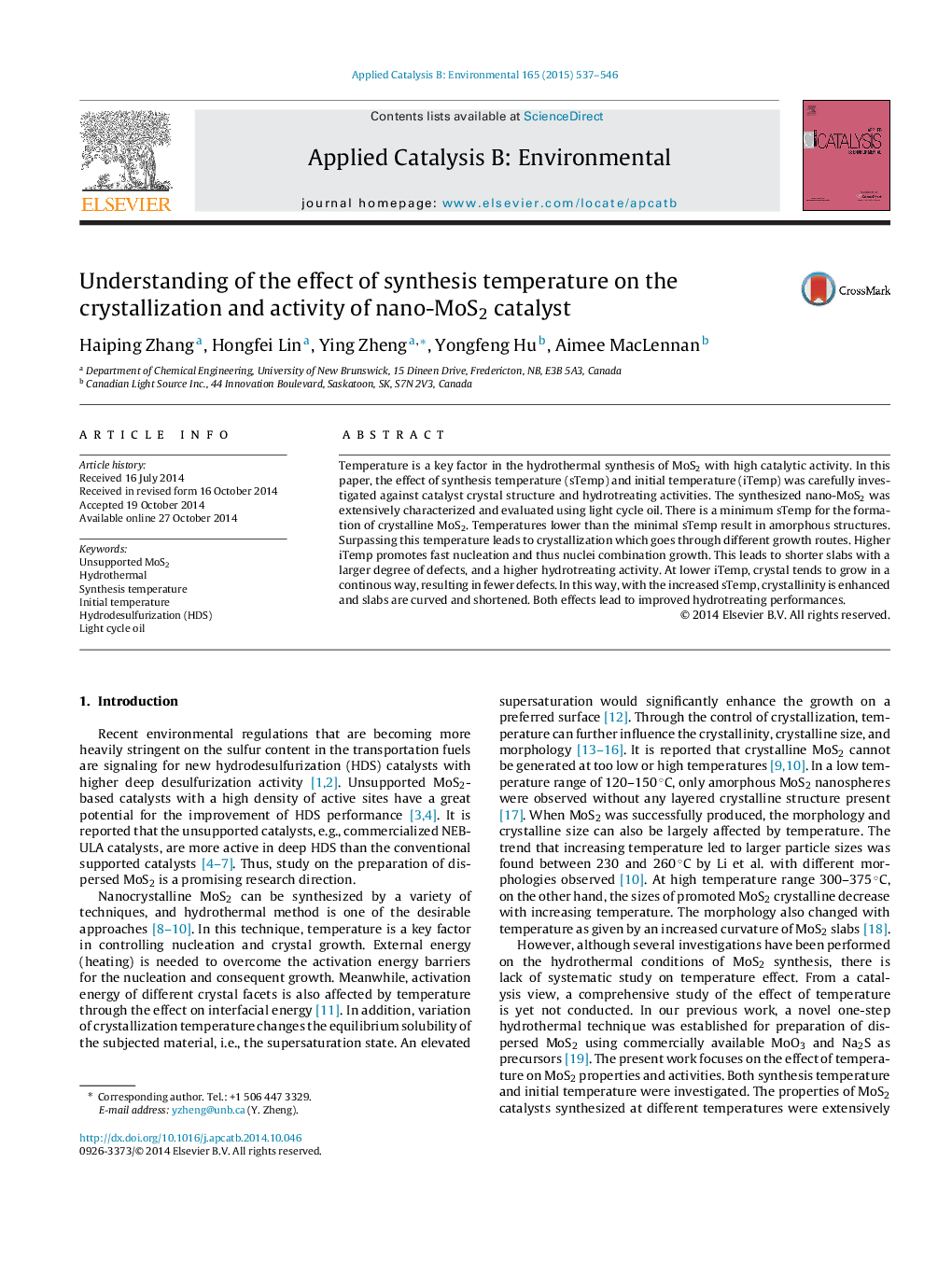| Article ID | Journal | Published Year | Pages | File Type |
|---|---|---|---|---|
| 45585 | Applied Catalysis B: Environmental | 2015 | 10 Pages |
•Hydrothermal synthesis of MoS2 is affected by initial and synthesis temperature.•Higher initial temperature favors the combination of nuclei route.•Lower initial temperature favors the continuous growth of individual nucleus.•Higher synthesis temperature improves crystallization and alters morphology.•MoS2 with higher initial and synthesis temperature shows higher HDS activities.
Temperature is a key factor in the hydrothermal synthesis of MoS2 with high catalytic activity. In this paper, the effect of synthesis temperature (sTemp) and initial temperature (iTemp) was carefully investigated against catalyst crystal structure and hydrotreating activities. The synthesized nano-MoS2 was extensively characterized and evaluated using light cycle oil. There is a minimum sTemp for the formation of crystalline MoS2. Temperatures lower than the minimal sTemp result in amorphous structures. Surpassing this temperature leads to crystallization which goes through different growth routes. Higher iTemp promotes fast nucleation and thus nuclei combination growth. This leads to shorter slabs with a larger degree of defects, and a higher hydrotreating activity. At lower iTemp, crystal tends to grow in a continous way, resulting in fewer defects. In this way, with the increased sTemp, crystallinity is enhanced and slabs are curved and shortened. Both effects lead to improved hydrotreating performances.
Graphical abstractFigure optionsDownload full-size imageDownload as PowerPoint slide
